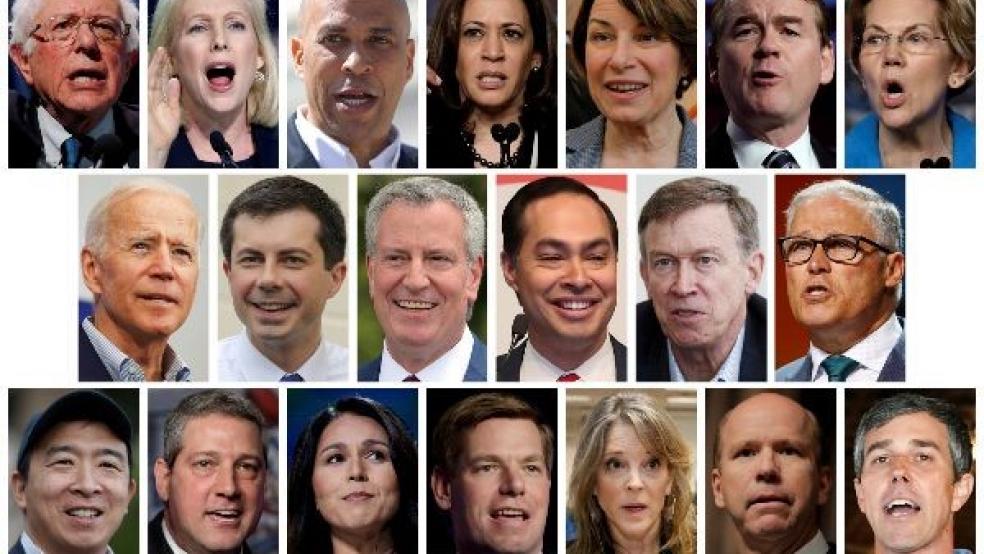Recognizing a growing hostility toward major social welfare programs, President Bill Clinton famously announced that “the era of big government is over” back in 1996. Twenty years later, Democratic presidential nominee Hillary Clinton pushed back against calls from within her own party for new social programs such as Medicare for All or free college tuition, saying the president can’t just “wave a magic wand” to finance new spending, however necessary or desirable.
But the Clintonian sense of fiscal restraint, which had long been shared by the American political establishment in both parties, is in retreat, says Bloomberg’s Sahil Kapur. Despite rising debt and near trillion-dollar deficits, this year’s crop of Democratic presidential candidates is proposing a wide range of new social programs to tackle big problems like health care, student debt and the high cost of child care.
Big government, it seems, is “back with a vengeance,” Kapur writes. And Democrats are open to different ways to pay for it, including issuing more debt.
‘Plenty of money’ around
Joe Biden, who served in an Obama administration that, like the Clinton administration before it, made substantial efforts to rein in spending and reduce the deficit, has lately shown a renewed interest in the creation of new federal programs. “The fact of the matter is there is plenty, plenty of money to go around,” the former vice president told the Poor People’s Campaign earlier this week. Biden said he would seek to roll back President Trump’s tax cuts and close loopholes to help pay for goals like free community college.
Other candidates, including Sen. Kamal Harris, have also said they want to repeal the Trump tax cuts to pay for new spending. Sen. Elizabeth Warren has put forth a plan for a universal wealth tax she says would pay for an ambitious program that includes universal child care and canceling student debt, though critics say it would likely fall short of covering all the costs. At the other end of the spectrum, Sen. Bernie Sanders has generally avoided talking about how he would finance his single-payer Medicare for All proposal, which would raise federal spending by trillions of dollars.
What changed?
Two trends have influenced Democrat’s change in perspective on government spending, Kapur says. First, Democrats have watched Republicans preach fiscal restraint while running up huge deficits with tax cuts and increased military spending. “Democrats are seeing themselves as Charlie Brown to Lucy and the football. At least some of them are waking up to the fact that they have been played,” said Stephanie Kelton, an economist advising the Sanders campaign who has sharply criticized the conventional understanding of how government debt works.
Second, the big increase in debt over the last decade and persistent deficits haven’t produced the negative effects that deficit hawks have long warned about. Interest rates have dropped rather than risen, with the 10-year Treasury note yield falling below 2% on Thursday. And investors are snapping up all the U.S. Treasuries they can get, despite a volume of debt sales that have more than doubled since 2017. “None of the bad things that were supposed to happen, according to the warnings from the ‘very serious economists’ — crowding out effects, inflation, slower growth, have happened,” Kelton said.
As a result, Democrats have once again started proposing large-scale spending programs to address major social issues such as rising inequality and national health care. And how to pay for those programs seems to have become a less important issue, Kapur says, as the leading presidential candidates propose competing visions of big government in the 21st century.




